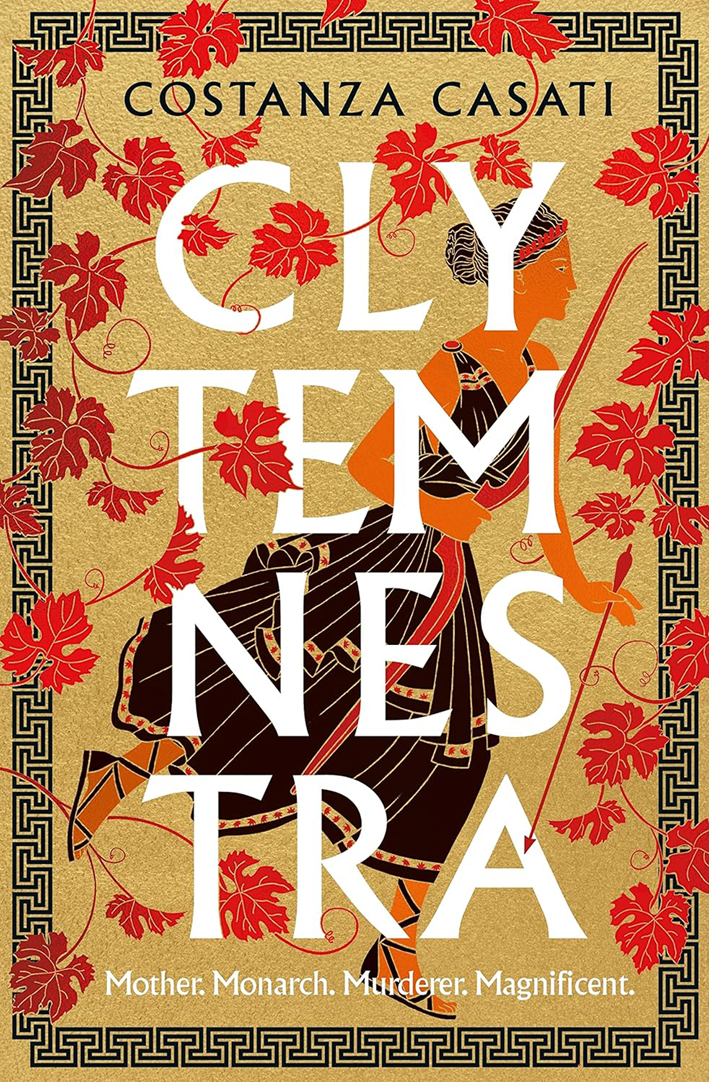
Clytemnestra joins the Classical fiction scene at a time when ‘feminist’ retellings are no doubt experiencing a boom, and Casati's eponymous debut novel sits rightfully alongside its predecessors by the likes of Miller, Haynes and Saint. Coming in just shy of 500 pages, Clytemnestra, although slightly longer than comparative titles, manages to avoid tedium or repetitiveness, making for a narrative compelling to the novice and veteran mythologist alike.
Split into five parts each tackling a different period of our protagonist's life, the first offers an in medias res of sorts, in which the early adolescent Clytemnestra hunts a lynx in her native Sparta. The childhood that shaped Clytemnestra is a detail often overlooked in the canon, though a rearing punctuated by sparring with your peers and telling stories of successful wolf hunts around the dinner table is something that Casati outlines with immense elegance. Whilst not lacking in its adrenaline, the first part is underscored with tenderness, most notably the mutually protective interactions between Clytemnestra and Helen, and their younger, typically ignored, sister Timandra. The part ends in a love marriage between Clytemnestra and Tantalus, though readers are always poised to remain on their toes. After all, harpazein, to take by force, is the verb Leda uses for marriage.
Parts 3 onwards explore the Clytemnestra most modern audiences will recognise, the narrative resuming after a 15-year gap in which Clytemnestra's four children to Agamemnon are born. Undoubtedly, however, Part 2's exploration of her first marriage is the book's greatest success in explicating Clytemnestra's villainous arc. To say a reader ought to sympathise with Clytemnestra is perhaps a step too far, though one can recognise her motives. It is not until the fifth and final part, in which her murders become markedly more indiscriminate and fickle, that we begin to wonder whether things have got slightly out of hand. Casati strikes a fine balance in creating a protagonist who is admirable in her conviction, yet more crucially, although pitiable in some regard, is somebody a reader never quite actively pities.
Casati has taken great lengths to ensure Clytemnestra is accessible to non-Classicists, the narrative itself preceded by a number of auxiliary tools. Family trees of the houses of Atreus and Tyndareus (especially useful when Casati uses patronymics), a character list with brief introductory sentences on each, and a map of the narrative's setting serve as useful reference points. More impressively, Casati makes consistent use of Greek terminologies and values within the text, all italicised and with a definition seamlessly woven into the narrative. To provide further clarity, at the end of the book, an Ancient Greek glossary lists all the italicised terms in the text, from aristos Achaion to xiphos, allowing any gaps in understanding to be easily and concisely plugged.
Casati has a real fluidity to her style of writing: her language is unpretentious and unobtrusive, with regular use of dialogue helping to entice the plot along at a comfortable speed. Readers perhaps not familiar with the story of Clytemnestra ought to note that there are references to sexual assault interspersed within the narrative, and Casati does not shy away from its realities and subsequent traumas for a survivor. Physical violence against women is another reality Casati confronts, and Clytemnestra's resilience in the face of this is pinpointed as a determining motivation for her later vengeance quest. With various sexual references in the story, whether consensual or coerced, such episodes suggest the book is perhaps not an advisable undertaking for very young readers.
Given the variations which exist within the Clytemnestra myth, Classicists might anticipate predictability. Adhering to Aeschylus’ version of the myth whereby Clytemnestra's first husband, Tantalus, and their infant son, are slain by Agamemnon drags Clytemnestra's raison d’être to the fore. There are, however, a couple of notable deviations from Aeschylus. Clytemnestra herself notices the fires of Troy at the war's end, and it is not Clytemnestra who slays Cassandra. Surprisingly, Clytemnestra pities the woman and wants her to live, adding a final layer of humanity to this otherwise ‘monstrous’ protagonist. For an expert in the myth, there is much dramatic irony to be enjoyed, especially in the death of Iphigenia at the end of Part 3, and the advent of Electra's disdain for her mother towards the book's end.
On occasion, Casati makes use of significant temporal lapses in her narrative: a fifteen-year one and a nine-year one, after which we tend not to see any glaring ideological or emotional shifts in Clytemnestra or those around her. Whilst key changes to the narrative are detailed after such interims (primarily births and deaths within the households), one does wonder whether there is a missed opportunity here for additional character development, or conversely, an exploration as to why her psyche remains unchanged. However, this detail is not by any means to the detriment of the plot, and in Casati's defence, covering the scope of the Clytemnestra myth would not have been feasible without such jumps.
For Clytemnestra to be Casati's first ‘Classical’ publication is no doubt a sign of great things to come, with its lively pace and gradual plot-twists making it a veritably easy read. The greatest triumph of the book is perhaps its accessibility to the less familiar reader, which will no doubt lead to the emergence of some new mythology enthusiasts. Yet whether approaching the story with a rudimentary or a comprehensive understanding of the myth, there is much to be enjoyed here. Casati's simultaneous tenderness yet avoidance of overstated sentimentality creates a Clytemnestra an audience cannot help but respect in some facet. Whether for her ambition, rejection of binary gender expectations or her Spartan military skill, this reworking is one which no doubt succeeds in its aim of proving that perhaps we are not as well-acquainted with the complexity of Clytemnestra as we thought.


